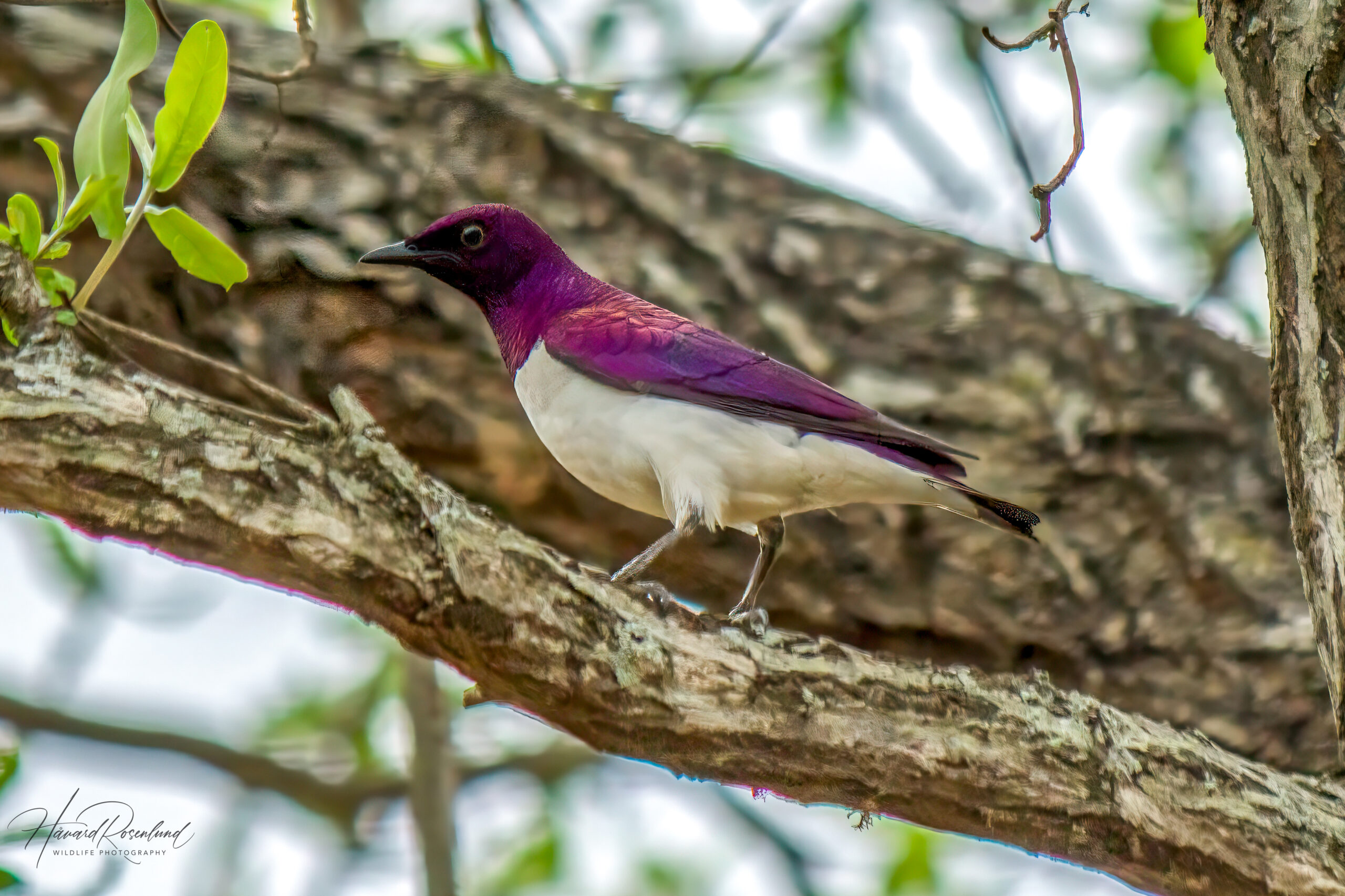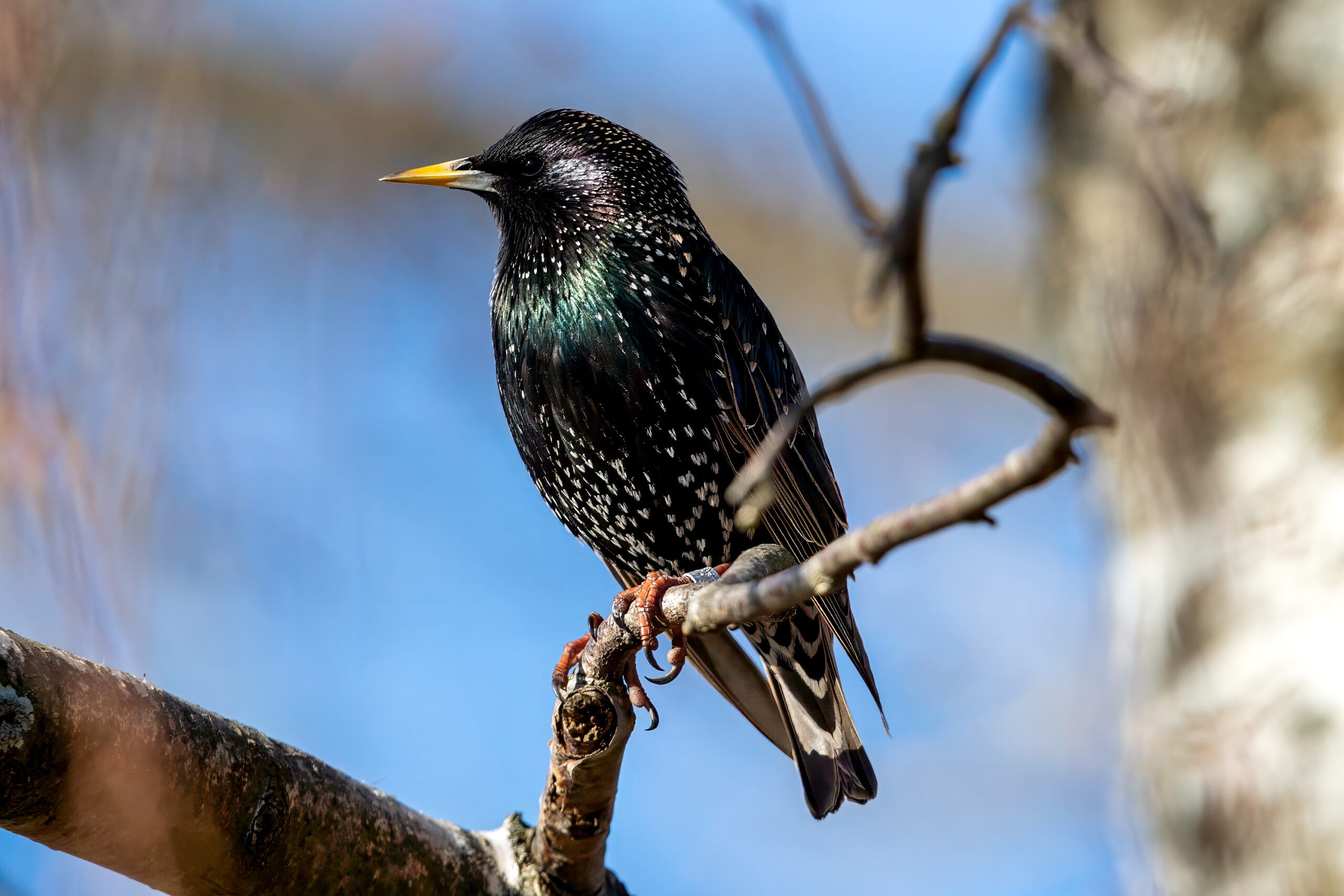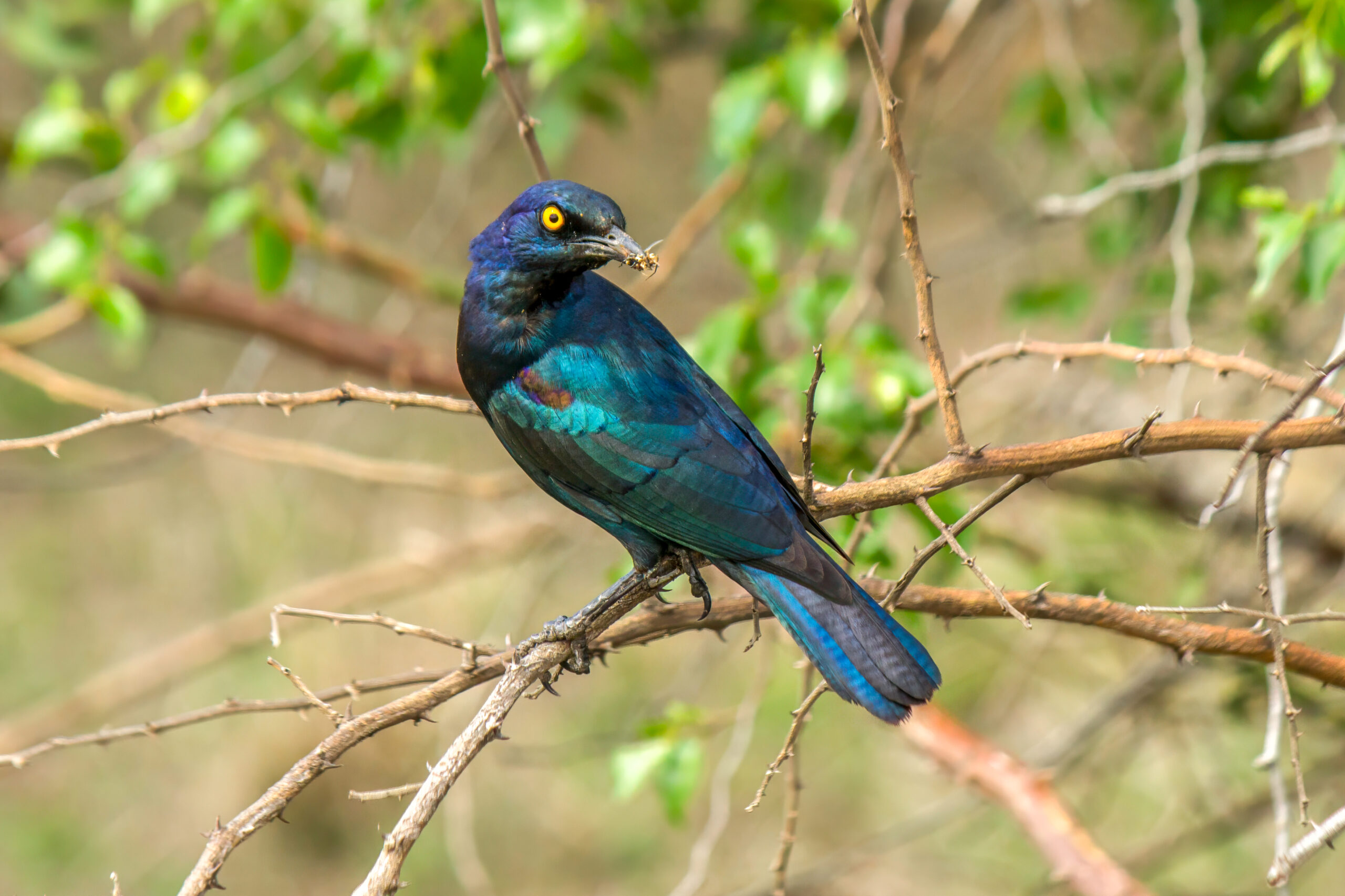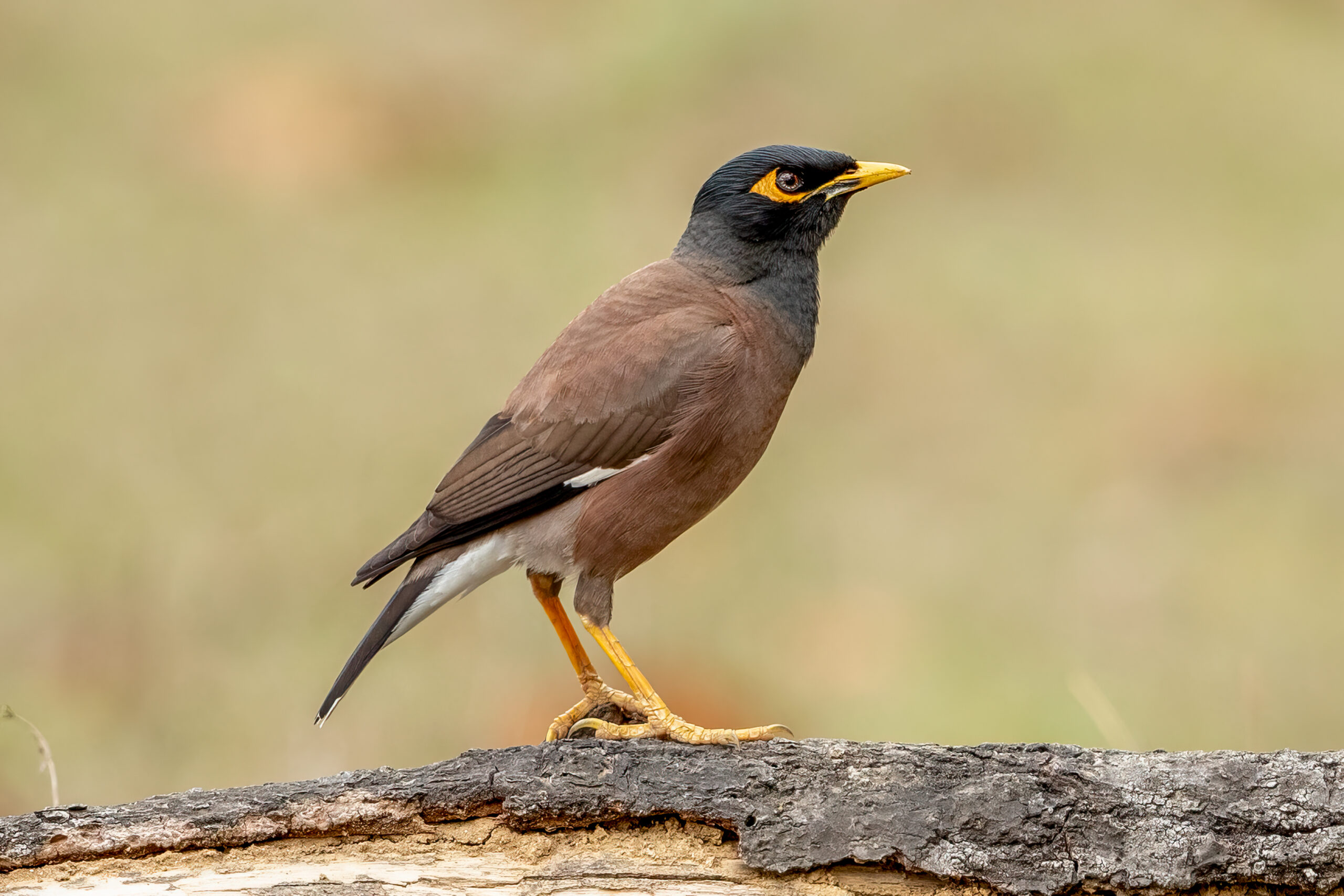Violet-backed Starling
(Cinnyricinclus leucogaster)
Description
The violet-backed starling (Cinnyricinclus leucogaster), also known as plum-colored starling or amethyst starling, is a striking bird found across sub-Saharan Africa. It inhabits a range that spans from Senegal and Ethiopia south to the northeast of South Africa. This species exhibits sexual dimorphism, with males displaying a vibrant violet back contrasting sharply with their white underparts. Females, in contrast, are brown with darker wings, and have brown spots on chest and belly. The species, as a starling, is relatively small and typically measures around 18 cm (7 inches) in length. Their distinct coloration, particularly of the male, sets them apart from other species.
Diet & habitat
Violet-backed starlings are versatile in their habitat preferences, thriving in both woodlands and savannas, often near water sources. They are predominantly frugivorous, feasting on a variety of fruits, but they will also consume insects, particularly during the breeding season. Their foraging behavior is agile and acrobatic, often seen fluttering among tree branches or hovering to pluck fruits or catch insects. These starlings are partially migratory, with some populations moving seasonally to exploit fruiting trees. Outside the breeding season, they can form large, noisy flocks, often mixing with other bird species.
Nesting
Breeding season for violet-backed starlings varies by region but generally aligns with the rainy season to capitalize on food availability. They are monogamous during the breeding season. Nests are built by females in tree cavities or in the abandoned nests of other birds. The female lays 2 to 4 eggs, and both parents participate in incubation, which lasts about 13-14 days. Fledging occurs around 21 days after hatching, with juveniles rapidly gaining independence.
Status
The violet-backed starling benefits from a wide range and large, stable population. There are no significant threats identified that could cause rapid declines. It is listed as least concern on the IUCN Red List.







